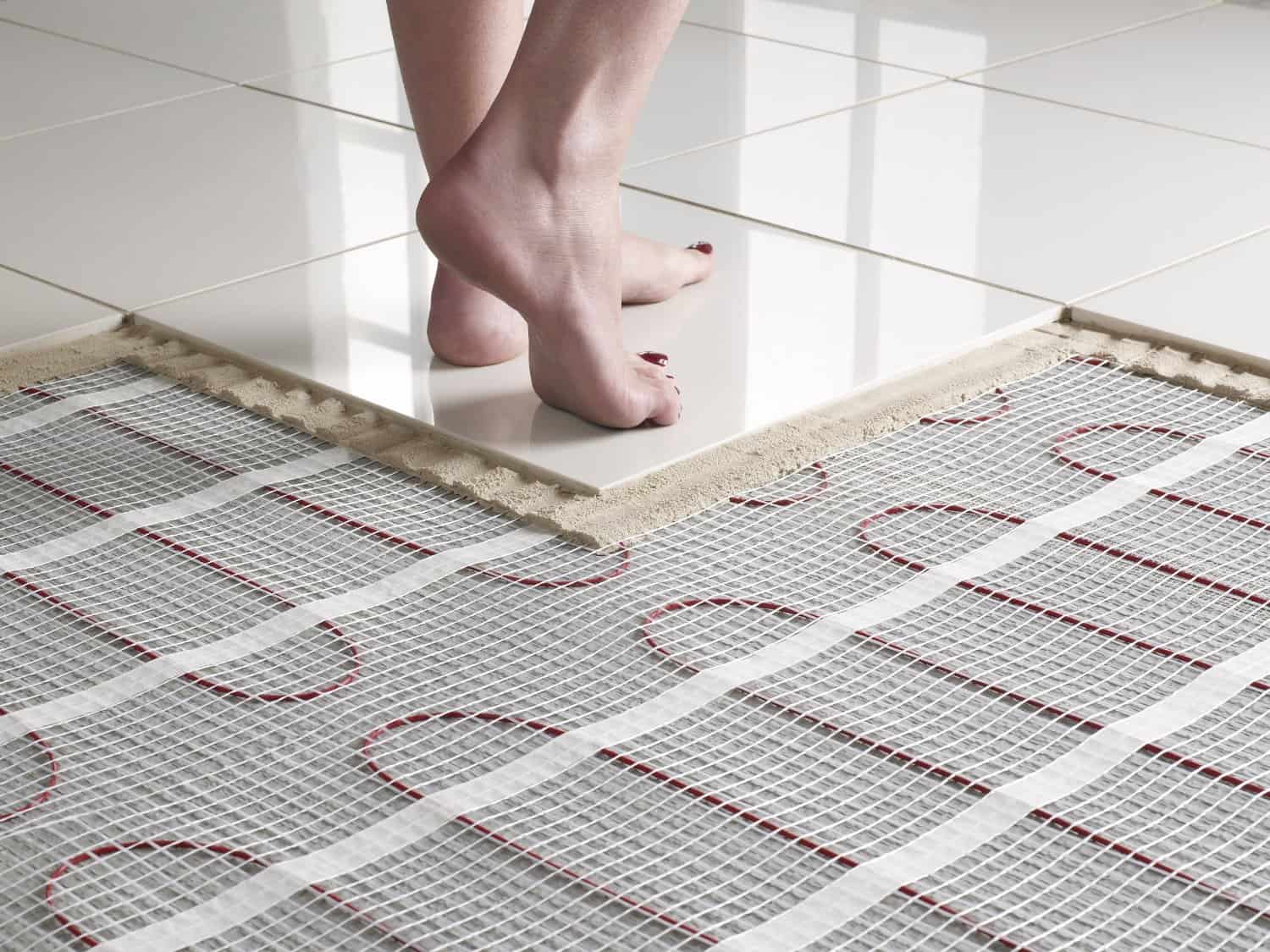Underfloor heating in new buildings are commonplace, but they are also increasingly retrofitted in older houses. We explain the advantages and disadvantages. We also provide information on the technology and provide suitable floor coverings.
Classic, hot-water heated floor heating, also called area heating, or an electric floor heating? The answer to this question is actually taste. There are almost no restrictions on the choice of soil. And even the widespread myth that underfloor heating systems are much more expensive to buy than radiant heaters, has crumbled in recent years. Yes, the installation of a floor heating costs more than that of a radiator heater – but not as striking as is often said. Very important: Before the connection you should be thoroughly advised by a specialist. If the prices differ greatly, check how this is done.
Why a floor heating?
With the underfloor heating, the heat rises from the floor upwards and radiates from walls and ceilings. This allows the room temperature to be kept lower than with a conventional heater. If radiator heaters require a flow temperature of about 50 to 60 degrees, a floor temperature of about 35 degrees is enough. This not only saves energy but also money. The underfloor heating has a purely optical effect, but it does not interfere with unshakable radiators when designing the room. Due to the low air circulation, hardly any dust swirls, which is good for house dust allergists. The rumor that underfloor heating systems should not be good for people with circulatory disorders in the legs, Is now obsolete and could not be demonstrated – especially with new floor heating systems. If you are unsure, talk to your doctor.
Advantages of Underfloor heating
- No visible radiator
- The heat is distributed evenly
- Promotes good indoor climate
- Ideal for asthmatics and dust allergists
Which linings are suitable for underfloor heating?
In the meantime, there are solutions for almost all floor coverings, both for electrical and for classic floor heating. Due to their storage and conductivity, ceramic tiles and natural stones are the first choice for the installation of a floor heating system. If you put a floor heating under wood, you should choose oak or walnut, but also some tropical woods are conceivable. They guide the heat energy of all types of wood best. Because of the joint formation, which is due to the heat expansion of the wood, only small parquet bars should be laid. Large single elements or ship floors are not suitable for laying. Carpet, laminate, corkor PVC are also suitable for floor heating – but they must be specially marked.
Disadvantage of Underfloor Heating
- Electric floor heating can cause high electricity costs
- Hot water floor heating takes long lead times until the room is warm
- In the case of repairs, the screed may have to be smeared (leaks)
Electric floor heating
The electric underfloor heating is suitable for the temperature control of baths , kitchens or winter gardens . It is easy to install and therefore easy to repair: The tailor-made underfloor heating is practically finished as a carpet floor on the screed . The tiles are laid directly above. Heating with electricity can be a cost factor, but a thermostat allows an exact adjustment of the temperature as well as switch-on and switch-off times. Another advantage of this underfloor heating system is that there can be no water leaks.
Classic floor heating with hot water
The underfloor heating system, which is operated with hot water, is embedded in the heating screed. The disadvantage is that the desired room temperature requires a relatively long lead time. In the case of underfloor heating in so-called drywall construction, the opposite is the case. The underfloor heating is thermally separated from the untreated floor and therefore only transfers the heat to the room. This underfloor heating is also suitable for retrofitting in old buildings because of the low installation height . In general, however, it can be said that the retrofitting of a floor heating system – for example, in old buildings – is quite complex and thus also relatively cost-intensive.